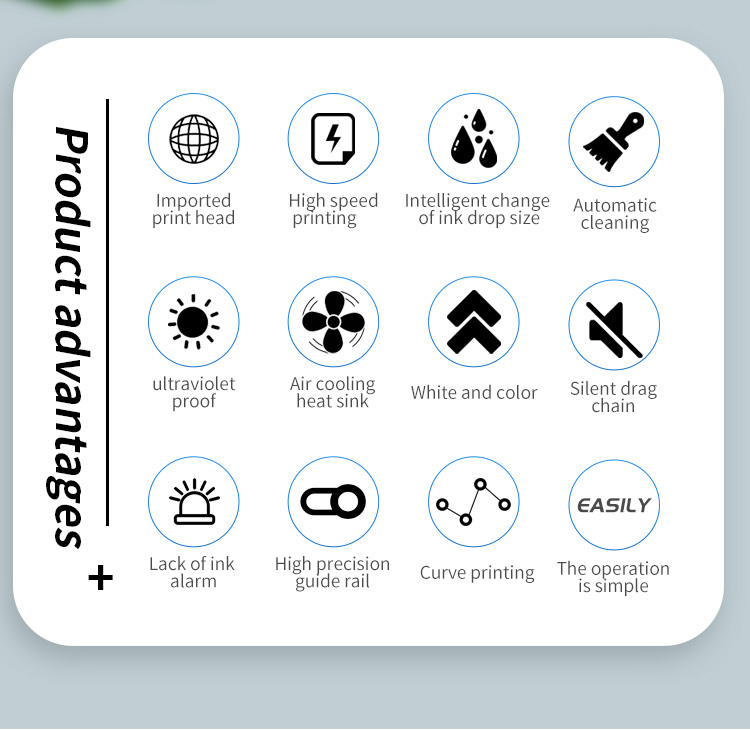50*40cm Double Head UV Printer
UV printing is a digital printing method that uses ultraviolet light to cure or dry ink, coatings, adhesives, aluminum, foam, or acrylic. Using UV printing, you can print a wide range of materials. This photochemical process of drying was first introduced as a way of drying gel nail polishes. The printing industry has since adopted this process as it makes it easier to print on almost anything, including beer bottles, brochures, and signage. UV printing is the same as traditional printing. However, there are differences in the type of inks used, the drying process, and types of products that you can print vary.
How Does UV printing Work?
To understand how UV printing works, let us first look at the differences between the traditional printing and UV printing. Traditional printing uses solvent inks which evaporate and release harmful VOCs into the environment. It requires spray powders to offset and dry the ink. This might take several days. You can only print papers and cards using traditional printing. It is difficult to print on plastics, foil, metal, or acrylic.
On the other hand, UV printing uses mercury, quartz, or LED lights to cure ink instead of heat. The UV light follows the ink as it is sprayed on the printing medium and dries it immediately it touches the medium. The ink transforms from a paste to a liquid almost immediately. There is no time for the ink to evaporate and release VOCs or toxic fumes. This makes UV printing environmentally friendly. The printing inks contain monomers, polymers, oligomers, and photoinitiators. UV printing uses UV lights with wavelengths between 200 to 400 nm. The photoinitiators absorb the UV light and undergo a chemical reaction that causes the printing ink to harden instantly.




Contact: Betty Wong
Phone: +8615018500959
E-mail: Info@myjpro.com
Whatsapp:0086 15018500959
Add: Add: Jinduhui Building,Xueyuan Street,Yanhu District,Yuncheng,Shanxi (No.263, Bridge West, Fuyong Qiaotou, Baoan District, Shenzhen)
We chat
